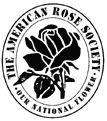 ARS Pacific Northwest District
ARS Pacific Northwest District
The Coastal ChallengeSo you’ve just moved to the southern Oregon coast. Welcome to one of the more challenging places in the Pacific Northwest to grow roses. With some knowledge, time and attention to details, you can success-fully grow roses in this climate. Yes, it rains eight months out of the year. Yes, the daytime temperatures in the summer rarely venture beyond 75º. Yes, winds can blow 40 to 60 mph through your garden, wreaking havoc in their wake. Yes, every rose disease known to man will venture its ugly head. Look on the bright side. Aphids and the other insects of your past life are rarely a problem. When blooms come and they will come, they will be large, full of substance and extraordinarily vibrant. Bouquets will bring envious looks from those who can only wish they can grow roses that look like this. Blooms will last on the bush for days, not a few brief hours. And within a couple of years you can impress your other gardening friends when you’ve learned to identify downy mildew with just a glance. The first order of business in January is to prune your roses; that is, if you have any existing roses to prune. The weather on the southern Oregon coast is often mild during the winter and freezes are rare. We can often take advantage of this mild weather and prune earlier than a lot of other Pacific Northwest rosarians. The further inland you live, the later you can wait to prune. More than likely, you will receive detailed instructions at your local rose society meeting on rose pruning. The basics are to remove all dead and diseased branches down to the bud union on hybrid teas, floribunda and grandiflora roses. Then remove all crossing branches and finally all weak branches less than a pencil in diameter. The all-important thought to keep in mind when pruning roses is health – to make sure roses are as healthy as possible going into spring. There is some controversy concerning dormant spraying roses following pruning. I believe that a good thorough dormant spray with a poly sulfur spray or copper spray is a good idea if the weather allows. The poly sulfur spray helps with scale and rust, if you’ve experienced either of these problems in the past. The copper spray is somewhat valuable in fighting downy mildew and black spot. One of the Southwest Oregon Rose Society’s expert rosarians strongly advocated spreading composted steer manure around his rose beds in February. For several decades he followed his own advice and he grew some of the best roses I’ve ever seen on the south coast. This is not a heavy application of steer manure but rather a thin layer (about 1 inch). It gives the soil a mild wake up call that there will soon be a lot of work to do to get the roses growing. In either January or February we often get a couple of weeks of false spring weather. This is an ideal time to begin your spray program for disease control. As you’ve heard often enough at your local rose society meetings, once rose diseases take hold, they are difficult to eradicate. It is much easier to prevent them. Blackspot can be a real problem in early spring. Banner-Maxx is one of the best controls to come along in a long time. As one of our members says, “The greatest thing since sliced bread.” It can be sprayed in 14- to 21-day intervals and a little goes a long way. In early March an application of alfalfa pellets around the roses gives the roses an early spring appetizer. One or two cups lightly scratched into the soil gives the roses a shot of growth hormones, as well as a source of organic nitrogen. As the alfalfa breaks down, it not only feeds the roses but also the soil. Soil is a living web of beneficial fungi, bacteria, nematodes, and other creatures. Without healthy soil, you cannot grow healthy roses. Do not add too much alfalfa. In large quantities, alfalfa can deter growth. Along with the welcome arrival of spring, the roses should begin arriving from the nurseries and soon it will be planting time. Articles Home Updated
July 02, 2004 |